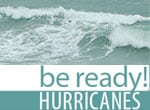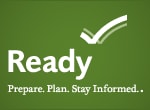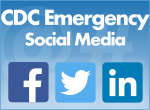Preparing for Wildfires

More and more people live in areas that are prone to wildfires. You can take steps to be ready for a wildfire and prepare your home and landscaping to reduce your risk from a wildfire.
Know your community’s evacuation plans.
- Find several ways to leave your area.
- Drive the evacuation routes and find shelter locations.
- Have a plan for pets and livestock.
Gather emergency supplies, including respirators.
- Gather emergency supplies, including NIOSH Approved respirators [PDF – 330 KB]. A respirator filters out smoke or ash before you can breathe it in.
View a full-sized image of the Be Ready: Wildfires Infographic. Share it on social media or print it out to post in your office, school, or home.
- Remember the needs of children; individuals with medical conditions like asthma, Chronic Obstructive Pulmonary Disease (COPD), diabetes, or heart disease; and those who are pregnant.
Can children wear respirators?
Children ages 2 years and older can wear respirators and masks. However, NIOSH Approved respirators do not come in suitable sizes for very young children. Choose a comfortable respirator or mask that your child can wear properly. If a respirator or mask fits poorly or is uncomfortable, a child might take it off or wear it incorrectly (for example, pulling it down from their nose). This reduces the intended benefits.
- Choose a size that fits over the child’s nose and under the chin but does not impair vision.
- Follow the user instructions for the respirator or mask. These instructions may show how to make sure it fits properly.
NIOSH Approved respirators and international respirators may be available in smaller sizes that fit children. However, manufacturers typically design them to be used by adults in workplaces. They may not have been tested for broad use in children.
Plan to keep wildfire smoke outside.
Schools and commercial buildings
School and commercial building administrators should make a plan to keep wildfire smoke out of the building. Learn more: Wildfires and Indoor Air Quality in Schools and Commercial Buildings | US EPA
Keep track of fires near you.
- Listen to the Emergency Alert System (EAS) and National Oceanic and Atmospheric Administration (NOAA) Weather Radio for emergency alerts.
- Monitor fires in your area using mapping tools. AirNow’s Fire and Smoke Map has a map of fires throughout North America. NOAA’s Fire weather outlook page maps fire watches and warnings.



